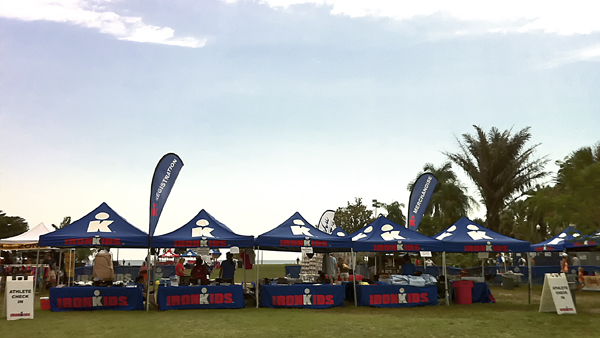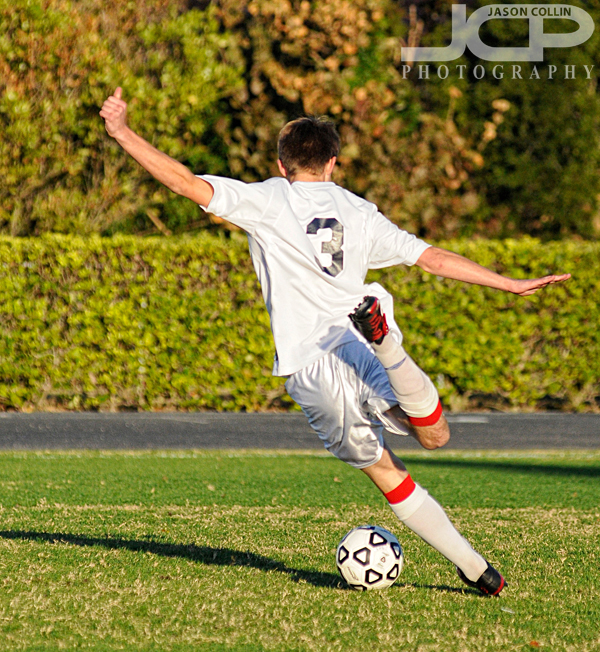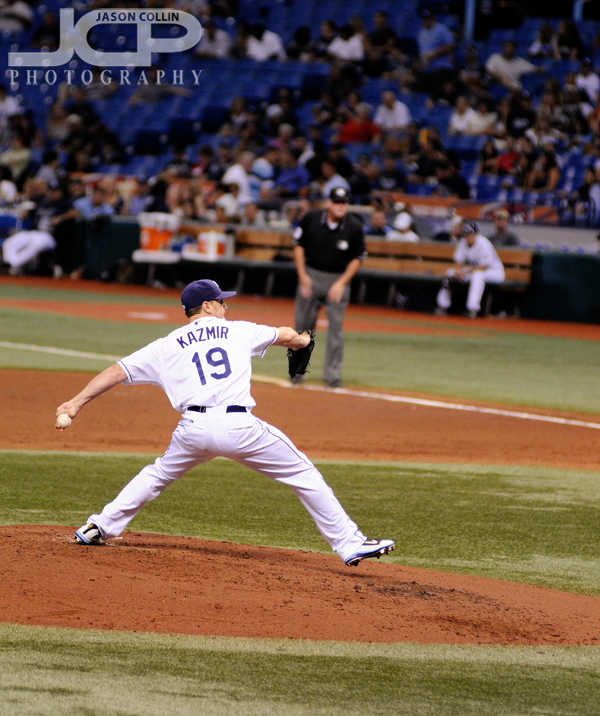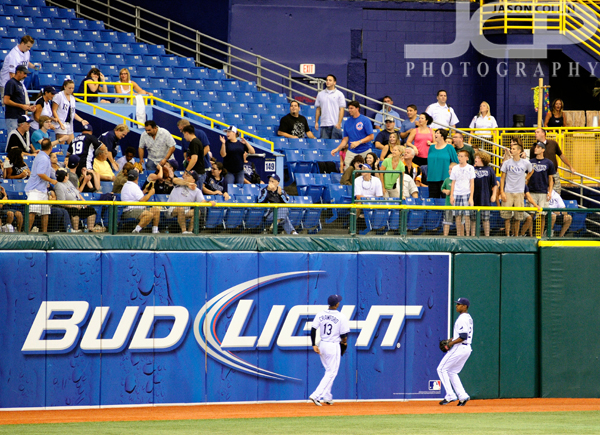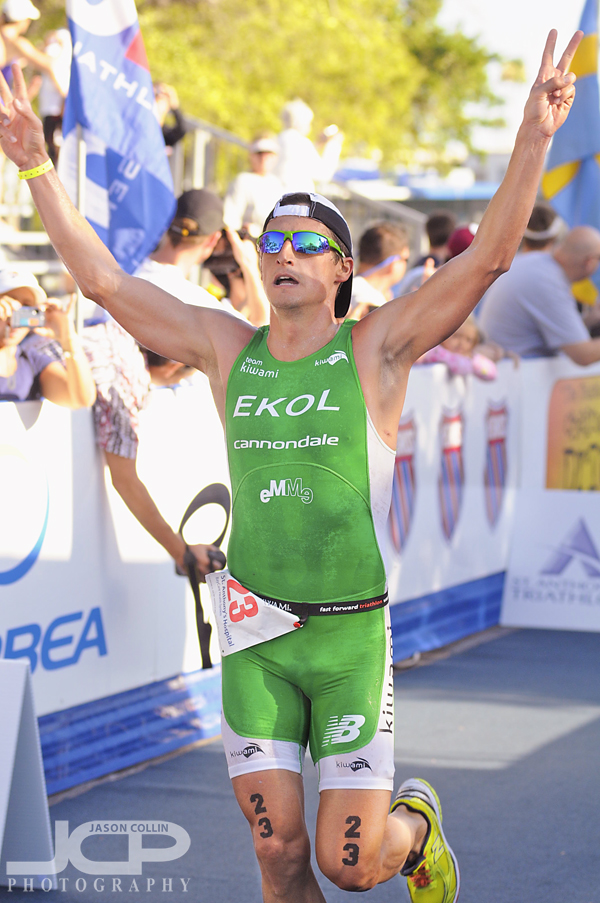 Filip Ospaly St. Anthony's Triathlon 2011 Men's Winner - Nikon D300 Nikkor 80-200mm -- f/4 ISO 400 1/800thI had the opportunity to work for FinisherPix photographing the 28th Annual St. Anthony's Triathlon 2011 in downtown St. Petersburg. For all but 30-minutes of the six hour triathlon shooting time I was at FoF, which stands for front-of-finish in sports photography lingo. The FoF was a pretty good spot to be for numerous reasons, the least of which I was in shade almost the whole time and I had the finish gate to lean against. There is of course the benefit of being at the exact spot the thousands of triathletes complete the grueling 51km event. I saw a full range of expressions from happiness, to relief, to glory, to pain.
Filip Ospaly St. Anthony's Triathlon 2011 Men's Winner - Nikon D300 Nikkor 80-200mm -- f/4 ISO 400 1/800thI had the opportunity to work for FinisherPix photographing the 28th Annual St. Anthony's Triathlon 2011 in downtown St. Petersburg. For all but 30-minutes of the six hour triathlon shooting time I was at FoF, which stands for front-of-finish in sports photography lingo. The FoF was a pretty good spot to be for numerous reasons, the least of which I was in shade almost the whole time and I had the finish gate to lean against. There is of course the benefit of being at the exact spot the thousands of triathletes complete the grueling 51km event. I saw a full range of expressions from happiness, to relief, to glory, to pain.
The men's and overall winner, Filip Ospaly, is featured above crossing the finish line at 8:41am. He would have entered the water at approximately 7:20am. The women's winner, Sarah Haskins, featured below, crossed the finish line soon after at 8:55am. She looked happy.
 Sarah Haskins St. Anthony's Triathlon 2011 Women's Winner - Nikon D300 Nikkor 80-200mm -- f/4 ISO 200 1/800thThere is a lot of timing that goes into making a FoF shot besides the usual focus lock and framing issues. Early in the morning the finish path was striped with shadows. So I had to use settings either for the shadow or direct sunlight, and depending on the time of day, one was better to use than the other. Of course this also meant that I had to wait until the triathlete ran into either the sunlight or shadows before pressing the shutter. Once the best settings are locked in, it still takes some time to get into a rhythm for framing the shot, timing the shutter release and waiting for the athlete to do her or his particular form of celebration. Unfortunately, the winner crosses first and thus there is no practice beforehand to find the best patch of shadow or sunlight. So it makes getting a good shot of the winners and the other early finishers a challenge.
Sarah Haskins St. Anthony's Triathlon 2011 Women's Winner - Nikon D300 Nikkor 80-200mm -- f/4 ISO 200 1/800thThere is a lot of timing that goes into making a FoF shot besides the usual focus lock and framing issues. Early in the morning the finish path was striped with shadows. So I had to use settings either for the shadow or direct sunlight, and depending on the time of day, one was better to use than the other. Of course this also meant that I had to wait until the triathlete ran into either the sunlight or shadows before pressing the shutter. Once the best settings are locked in, it still takes some time to get into a rhythm for framing the shot, timing the shutter release and waiting for the athlete to do her or his particular form of celebration. Unfortunately, the winner crosses first and thus there is no practice beforehand to find the best patch of shadow or sunlight. So it makes getting a good shot of the winners and the other early finishers a challenge.
 2011 St. Anthony's Triathlon cyclist in downton St. Petersburg - Nikon D300 Nikkor 80-200mm -- f/4 ISO 640 1/1250thI began the morning of the triathlon shooting the "bike out," which is the term used for describing the location where the triathletes first get on their bikes and start out on the road course. This was another challenging shooting situation with cyclists rolling very quickly requiring a fast shutter speed and quick timing on the framing of the shot. The long shadows across the street also caused auto-focusing problems so I ended up switching to manual focus and waiting for the cyclists to cross a designated spot on the street (a crack actually) each time then pushing the shutter. This produced better, more consistent results for me.
2011 St. Anthony's Triathlon cyclist in downton St. Petersburg - Nikon D300 Nikkor 80-200mm -- f/4 ISO 640 1/1250thI began the morning of the triathlon shooting the "bike out," which is the term used for describing the location where the triathletes first get on their bikes and start out on the road course. This was another challenging shooting situation with cyclists rolling very quickly requiring a fast shutter speed and quick timing on the framing of the shot. The long shadows across the street also caused auto-focusing problems so I ended up switching to manual focus and waiting for the cyclists to cross a designated spot on the street (a crack actually) each time then pushing the shutter. This produced better, more consistent results for me.
 St. Anthony's Triathlon 2011 - faces of victoryThe triathletes really crossed all age groups and body types. By no means was everyone under 40 years old and super fit looking. I found myself being very impressed as the announcer called out people over 70 years old finishing, and finishing strong. Nowadays one can be an athlete in any decade of life.
St. Anthony's Triathlon 2011 - faces of victoryThe triathletes really crossed all age groups and body types. By no means was everyone under 40 years old and super fit looking. I found myself being very impressed as the announcer called out people over 70 years old finishing, and finishing strong. Nowadays one can be an athlete in any decade of life.







